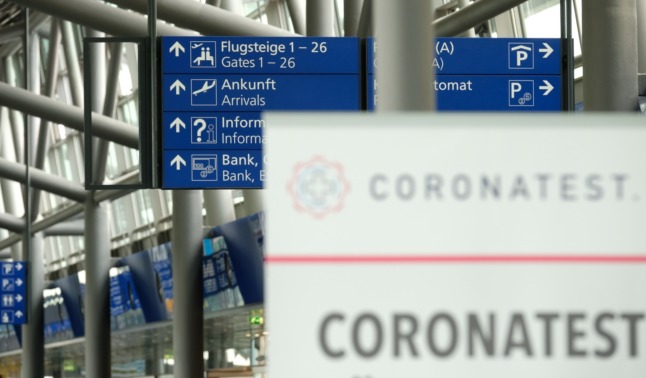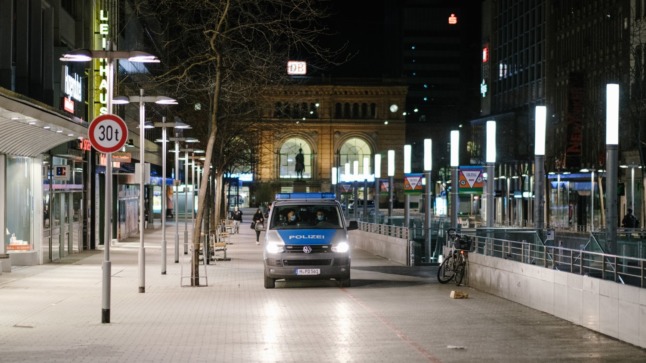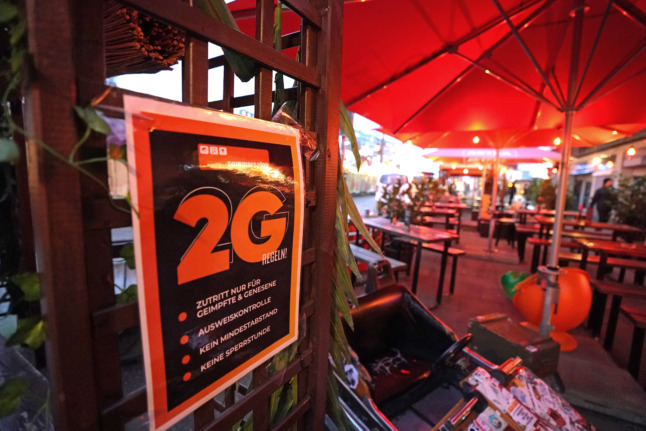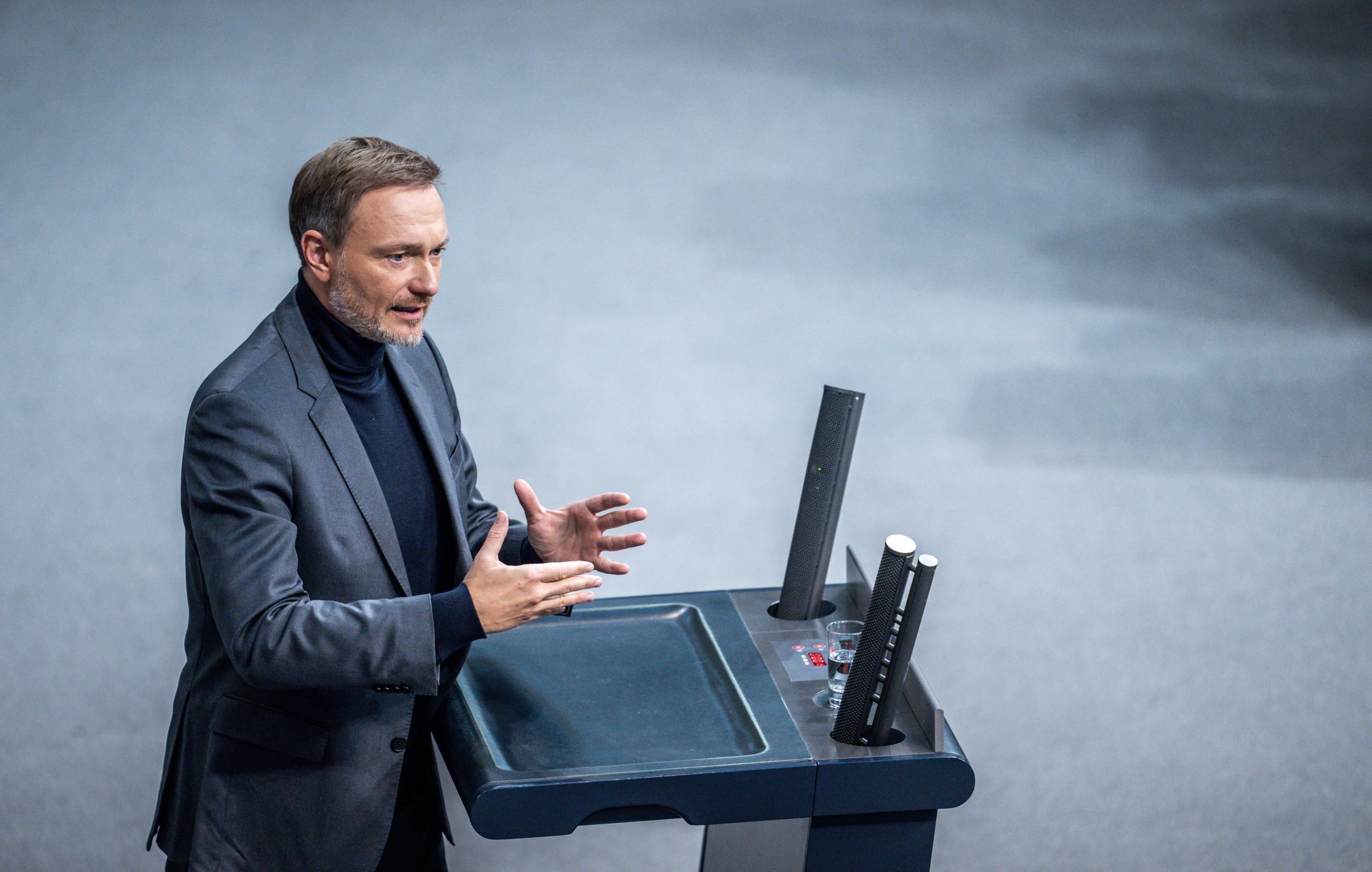Although German is more renowned for its complicated compound nouns than its compact witticisms, it’s not short on pithy morsels. There’s this one, for example: aus Angst vor dem Tod Selbstmord begehen – to commit suicide for fear of dying. It aptly describes a very human mechanism: when faced with seemingly overwhelming danger, many people either exhaust all other options (including patently bad ones) before taking real action or, worse, do nothing at all.
Having said that, English has certainly got a knack for good analogies, and recently, I’ve been searching for the German equivalent of this one: “When you’ve got a hammer, every problem looks like a nail.”
Both these figures of speech are useful ways of looking at the current Coronavirus situation in Germany – which is, of course, not good. Case numbers are high, vaccination rates are low, and the atmosphere is apocalyptic.
After November 2020 (the half-arsed “semi-lockdown”) and April 2021 (the doomed “Easter break”), for the third time in just over a year, the country is suffering a collective nervous breakdown over a pandemic which has, later than elsewhere, but just as unforgivingly, laid bare our most unattractive national traits: a tendency to alternate between states of chauvinism and hysteria, an obsession with pointless details excluding the bigger picture, and a deeply unbalanced concept of liberty. For anyone asking “How did we get here?” (or perhaps: “Why are we still here?”), this is what’s happened.
Self congratulation
Germany likes to think of itself as being among the best, and is especially happy when its successes come either from innovation and high quality or from the strict, disciplined application of rules. So early last year, when a prompt national lockdown with high levels of compliance seemed to keep the virus at bay, this – combined with the fact that Germany also had good PCR testing where other countries were lacking it – had us all patting ourselves on the back.

The flipside was the usual chauvinism. In summer 2020, Germans on holiday would come back “shocked” at all those Italians hugging or the French still exchanging kisses. In their astonishment, the fact that they were returning without being routinely tested escaped them – much as it escaped a government also too busy with self-congratulation to put in place much by way of preparation for the autumn.
That was unfortunate, because, as it turned out, we basically got lucky last spring. What autumn revealed was that all the performative hand-disinfecting and door-to-table mask-wearing in the world wasn’t enough to stop Covid when, outside of restaurant settings, Germans were behaving like pretty much everyone else: meeting family, hugging friends, bending rules.
READ ALSO: 7 things the Covid-19 crisis has taught us about Germany
Yet rather than just accept that we, too, are humans faced with a very nasty virus, we panicked about the fact that we were no longer on par with wholly incomparable countries (e.g. New Zealand) and simply facing the same trouble as our immediate neighbours. That rates of illness and death here, while higher than hoped, were still considerably lower than across the borders in pretty much every direction was not deemed a moderate success, but rather grounds for national hysteria.
The result was a deeply damaging seven-month lockdown so inescapably grinding that compliance broke down halfway through, precipitating a nationwide curfew of dubious constitutionality. After (an unfortunately late) spring eventually freed us from this dysfunctionality, we immediately reverted back to national chauvinism, basking in the success of the Germany-made BioNTech/Pfizer vaccine while we scorned other vaccines, like Renaults next to BMWs on a dealership forecourt.
Now, as we stumble into winter with under 70 percent of the population fully vaccinated and ICUs under strain, we have flipped back to national hysteria. While Denmark is only reapplying minimal Covid measures at 400 cases per 100,000 inhabitants per week, Germany is doubling down on measures which never went away at the 300 mark and the national mood is somewhere between “We’re all doomed” and “Please, just shoot me”.
Education, fiscal prudence, digitisation – and now Corona: clearly we have immense difficulty with the idea that we might just be a normal central European country and not either an absolute Weltmeister or an abject failure.

Obsession with detailed rules
It’s a hallmark of hysteria that prevents those gripped by it from assessing their options and responding adequately. This is worsened by a long-held national tendency which has been given free rein since Coronavirus struck: an obsessive approach to detailed rules which gets in the way of actual issues.
That’s why it’s illegal to cross the road on a red light even when there’s no traffic, but totally legal to drive two tonnes of metal at over 30mph even in built-up areas. That’s also why it’s legal to be an unvaccinated medical professional and treat vulnerable patients in Hamburg’s hospitals, but illegal to take off your mask in all manner of outdoor spaces – unless, of course, you have one of the numerous exemptions, have bought a takeaway coffee, or want a cigarette…
German also has a neat word for this kind of ‘displacement activity’: Ersatzhandlungen. The solutions currently being proposed, withdrawn, and proposed again are all, to varying degrees of egregiousness, displacement activity which fails to deal with the elephant in the room. It’s an elephant shaped like the 30 percent of the population who have not yet received even a single dose of vaccination against the virus.
And so new legislation will allow for making the fully-vaccinated take tests to go to restaurants (“2G Plus”) and re-imposing mask wearing into the bargain, will limit public transport to those who have immunity, a vaccine pass, or an up-to-date negative test (“3G”), and will gives states powers to impose lockdowns if things get out of hand.
And while this new approach is certainly preferable to the previous federal-level solution, all of it is just managing a pandemic instead of really pushing for, say, Portuguese levels of vaccination which would put us in a much better position.
READ ALSO: Why are so many Germans reluctant to get vaccinated?

German politicians have not levelled with those unvaccinated
There is a massive irony to the fact that the most effective Covid vaccine out there was developed in Germany, yet Germans have proved some of the most unwilling to take it (or any others) in Europe. There are lots of reasons for this hesitancy, but it won’t do to shift the blame wholly onto the population. It’s a political failure.
Unfortunately, we were told all of last year that our world-class testing infrastructure and comparatively early adoption of surgical and construction-grade masks were keeping our figures low. And so now, 18 grinding months of restrictions later and even with a plethora of vaccines at our disposal, a non-negligible number of Germans still think tests and masks will be enough to ride this thing out. Why? Because, thus far, politicians have proven unwilling to level with them.
READ ALSO: Germany’s planned Covid restrictions to fight fourth wave
That’s perhaps why, over yet another wasted summer, the outgoing grand coalition – led by Chancellor Angela Merkel – allowed vaccination to drift off to a wholly hyperlocal level, predicating people’s interest in or access to it on their relationship to their GPs (assuming they have one…). Only now, as health experts are raising the alarm every day is there any talk of reactivating large-scale vaccination centres. What there will certainly be, though, as of next week: more tests.
Essentially, lateral-flow tests and masks are Germany’s hammer, and so all of our Covid problems look like nails. The problems are, however, screws. And the fact that we are still hammering away at them rather than using our screwdriver (i.e. vaccination) is so frustrating that it’s painful to watch.
We are now faced with the spectacle of an incoming administration which, rather than even just forcing nurses and care-workers to get vaccinated, is planning to make the doubly, potentially even triply inoculated get near-daily tests.
The 70 percent of us who have overridden the national tendency to excessive caution are still being treated as ticking time-bombs while live munition is wondering around all over the place. This is tantamount to placing a powder keg under trust in the state and in medical science. For fear of death at the ballot box dealt out by the 30 percent, Germany’s new government currently looks intent on committing potentially explosive suicide.
READ ALSO: Germany risks losing support of the vaccinated in Covid fight






 Please whitelist us to continue reading.
Please whitelist us to continue reading.
Sick of the people who refuse to get vaccinated, while sensible people are waiting to get our third jab. No, I won’t agree to also be also forced to take a test to go somewhere the same as someone who cannot be bothered to be vaccinated.
This Government is too scared to take the Bull by the horns & make these idiots get a jab.
We cannot vaccinate our way out of this. It is the like the flu and we have never “ beaten” the flu through vaccination.
The only long term solution is to gradually reduce the masks, the restrictions and rely on natural immunity in the longer term.
Agreed. This idea that vaccination is a silver bullet is misleading, and not borne out by historical approach to any other illness. And shame and blame, or creating essentially two societies based on vaccination status, is not constructive or solving the problem at the root. Also, “breakthrough cases” are not so rare. There have been countless cases of vaccinated individuals in the US and around the world who have still gotten sick and can still be carriers. Treating the unvaccinated as pariahs, or the source of the ongoing pandemic, is simply isolating a segment of the population further with faulty reasoning.
You are false to put this on the same level. Vaccinated people are much less likely to become reinfected, much less likely to become very ill, and much less likely to spread the disease, thus reducing the chance of further more dangerous mutations.
Richard. You are incorrect in part of your statement.
“Vaccinated are much less likely to become very ill” – Partly true as symptoms seem to be reduced, although many vaccinated are becoming ill and dying too.
“Vaccinated people are much less likely to become infected” – They are less likely to become infected at first, but the vaccine effectiveness drops off after a few months. Recent data from the UK (Public Health England) for weeks 36-44 shows that for everyone over 30 years, infection rates are HIGHER in the vaccinated. No-one seems to know how this can be, and the media are not really talking about it, but the data is the data.
“Vaccinated are much less likely to spread the disease” – This is completely false. They have known for many months now that viral loads for those infected are the same regardless of vaccination status. US CDC has confirmed this. Data from UK and Israel has confirmed this. If viral loading is the same then infectiousness is also the same.
It is also worth considering that if symptoms are lower and testing less frequent for the vaccinated, it is the vaccinated who are far more likely to be the driver of disease spread at this point in time.
Just one further point:
Mass vaccinating into a pandemic is actually a driver of mutations, dangerous or otherwise. This is especially the case for “leaky” vaccines that don’t block infection.
This used to be well known virology 101 before 2020.
I agree that Vaccination is not the ultimate solution, but it helps get us out of this just like the flu jab reduces cases. And people who will not even get vaccinated are filling up the wards that could otherwise be avaviable to people with existing problems
The government certainly spent their resources in the wrong places such as poorly effective lateral flow tests, instead of investing in a campaign to get people vaccinated. Just because the vaccination is the first application of mRNA, does not mean its not well researched and understood; it has decades of research supporting its effectiveness. The lack of scientific rational and explanation around the technology has allowed for anti-vaxers to spread their misinformation.
Completely agree. And where I live (Eastern Part of NRW), there was a massive shortage of vaccine. I had to BEG my Doctor to find just one more dose and get the first jab, and I’m 65 and that was not until May 26th 2021!
Laschet totally mishandled the situation here. Thank God he is now History.
I have yet to see proof that this constant testing concept has any ACTUAL result on infections or spread. The correlation associated with it can be compared with every other European country that also saw reductions as temperatures went up, and you see that this huge expense on testing is just a waste of money.
Unlike other commenters believe, vaccination is the way out of this, combined with actually checking and verifying vaccination status and ID. Contrary to belief, vaccination has both effectively eradicated disease (i.e. measles) and does effectively reduce infection rate and severity (i.e. flu) when the uptake is significant enough.
The concept of natural herd immunity through devastating levels of infection and recovery is both irresponsible in respect to humanity and highly risky in regards to emergence of variants.
I think we could do with some moderation of BJD’s comments – several of these ‘facts’ are really not true